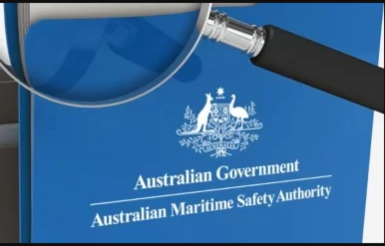
The German Bureau of Maritime Casualty Investigation (BSU) has published its report on the German flagged ferry BERLIN, which suffered a fire en route to Rostock on 13 August 2020 due to a pressure gauge pipe.
At about 0245, when the ferry was in the approach fairway about 2.6 nm off the sea channel, alarms sounded in the engine control room (ECR) and in the workshop. The IMAC Alarm, “gear oil sump level low” sounded first. The ship’s mechanic 1 (SM 1) acknowledged the alarm in the workshop and proceeded to the source of the alarm at main engines (ME) 1 and 2 (the two main engines that drive the controllable pitch propeller together with ME 3, via a common reduction gearbox). There he detected a leakage from a double nipple on top of the gearbox (from the pressure gauge connection). Continue reading “Material fatigue of pressure gauge pipe causes ferry fire”
 The risks posed by poor conditions of storage of this common compound, which is used extensively in the Fertilisers and Explosives industries, have been well documented but awareness of the dangers of fire during transportation by sea is less well known. The objective of this guide, entitled ‘Ammonium Nitrate Fire Risk on Board Ships’ is to outline best practice with respect to the management of risk on vessels chartered to ship the compound through ports around the world.
The risks posed by poor conditions of storage of this common compound, which is used extensively in the Fertilisers and Explosives industries, have been well documented but awareness of the dangers of fire during transportation by sea is less well known. The objective of this guide, entitled ‘Ammonium Nitrate Fire Risk on Board Ships’ is to outline best practice with respect to the management of risk on vessels chartered to ship the compound through ports around the world.




 A new report by the
A new report by the  The inland waterways rescue organisation,
The inland waterways rescue organisation,  Britannia P&I Club has published guidelines for containerships to deal with parametric roll motions. In the guidance,
Britannia P&I Club has published guidelines for containerships to deal with parametric roll motions. In the guidance, 
